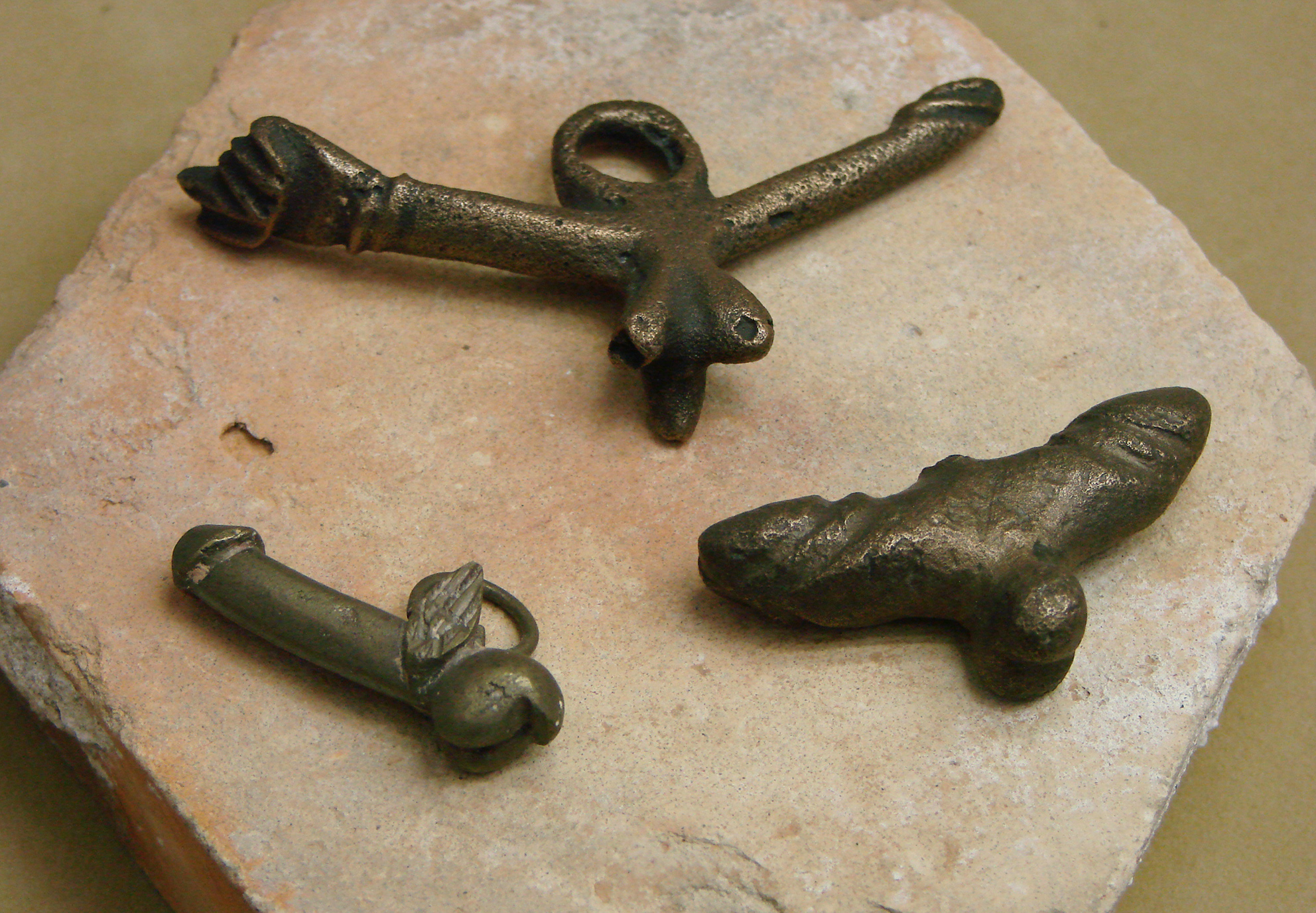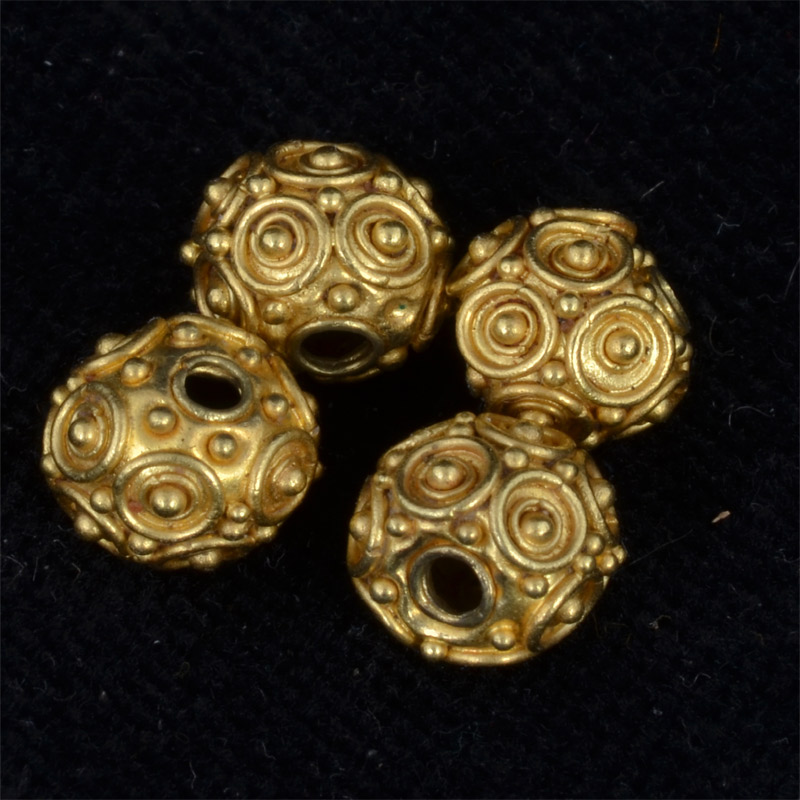Yeah, but many of those seem utilitarian. The argument has been put forward that the dodecahedrons were pure bric-a-brac; what other examples do we have?
The statues and figurines don’t “do” anything, they would just be knickknacks that sit around. One other item that probably couldn’t be used for anything was the enameled bronze aryballos mentioned earlier in the thread. The Getty Museum says it is a bunch of loosely assembled parts in the form of an oil bottle, but may have never been able to actually hold a liquid. And it has a dodecahedral design. ![]() https://upload.wikimedia.org/wikipedia/commons/thumb/e/ec/Aryballos_with_Pentagonal_Design_Gallo-Roman_70-100_CE_Bronze_and_Enamel.jpg/500px-Aryballos_with_Pentagonal_Design_Gallo-Roman_70-100_CE_Bronze_and_Enamel.jpg?20190807232937
https://upload.wikimedia.org/wikipedia/commons/thumb/e/ec/Aryballos_with_Pentagonal_Design_Gallo-Roman_70-100_CE_Bronze_and_Enamel.jpg/500px-Aryballos_with_Pentagonal_Design_Gallo-Roman_70-100_CE_Bronze_and_Enamel.jpg?20190807232937
(I’m stumped by why I am having trouble getting the image to show up, rather than the link. Usually I can do it.)
That’s the beauty of them…
Here are two fibulae you might find interesting. They are/were up for sale on eBay, with claims that they are Roman artifacts. They have geometric designs with knobs, which gives them more similarity to dodecahedron shapes. It’s too bad they aren’t in a museum with information regarding their context, provenance, or dating. Maybe you could try to find more info about them.
(And now I can get images to show up again. Why couldn’t I do it before?)
Romans liked fascinum (phallus pendants). Gallo-Romans picked up that fashion statement. The English word fascinate derives from fascinum.
There are Gallo-Roman toys, such as this terra cotta horse. The five-spoked wheel bears a possible resemblance to the corner of an icosahedron.
Yes, I was referring to the Reddit pic you posted and the followup to this website. The Asian beads are dated from 206BCE to 220CE, while Roman dodecahedrons are dated from the 2nd to 4th centuries CE (100-399). I would opine that the nodules imply that the Asian beads are copies of the Roman dodecahedrons. That or nodules on vertices have some aesthetic, structural, or functional attraction that I am unaware of. I won’t rule out convergent evolution (independent origins) but I’d like some discussion regarding those nodules. One piece of evidence that has fallen away is that Asian dodecahedron beads with nodules have also been found at locations other than the very tip of the Silk Road.
The archaeological finds for those beads are at coastal sites along what is currently called the Maritime Silk Road. I think it’s the Chinese find that has the bigger date range. The others tend toward the early end - earlier than Gallo-Roman dodecahedrons existed.
Evidence calls for a retraction, given dating. Also I found this modern example of “Ancient Pyu Gold Beads” at an online store. Nodules on gold jewelry are unexceptional, so I shouldn’t draw conclusions from nodules on the vertices of a geometric solid. I mean there could be European influences - I’m not ruling them out for the later dates - but I no longer think the visual evidence on its own is particularly strong.
(multiple tries and that apparently completely correctly formatted .jpg simply will not embed. WTF?)
I managed to extract the image. Here it is.
In that case, it’s because the site that’s hosting it prevents hotlinking. If you open it in a new window, and then click on the address bar in that new window and hit enter (so the hit to the site is coming from the same site), the image shows up. In cases like that, the only way you’re going to be able to get it to show up inline is to copy the image and re-host it on a new site.
The Asian golden dodecahedrons certainly look similar, being metal dodecahedrons with round holes in all of the faces and knobs on the corners, but it’s hard to come up with any sort of explanation that encompasses both, given the separation in both distance and time, the vastly different sizes of the two, and the different materials. Best I can come up with is that one of the Asian ones (which was meant purely as a decorative bead) somehow, centuries later, showed up in Europe, someone thought it looked nifty and made a larger bronze copy, and they became a fad. More likely, it’s just a coincidence.
The Asian ones sure as hell look “purely decorative” to me.
The Asian ones are also using a different method of construction - the dodecahedron part looks to be constructed of 12 fused rings.
Joe Scott has a new video on them as a follow up to his previous one.
Better that he got Milo in this time, who at least has some archaeologist training. And here he really is the voice of reason. Like, he really gives very short shrift to the knitting thing. I also love that he just shoots down the calendar idea.
But basically, nothing new here.




